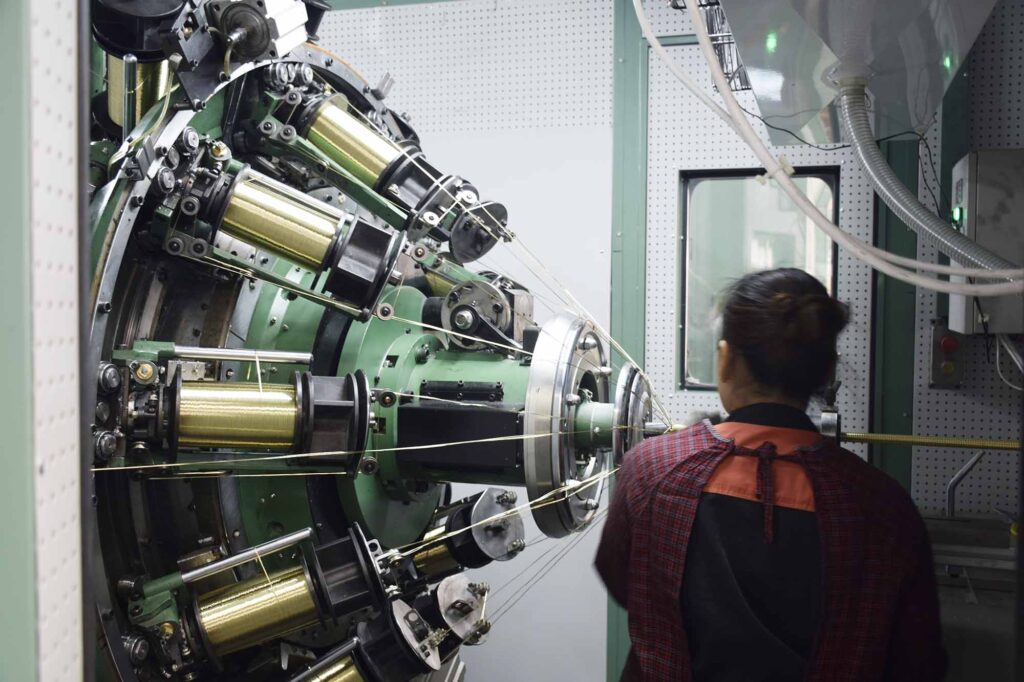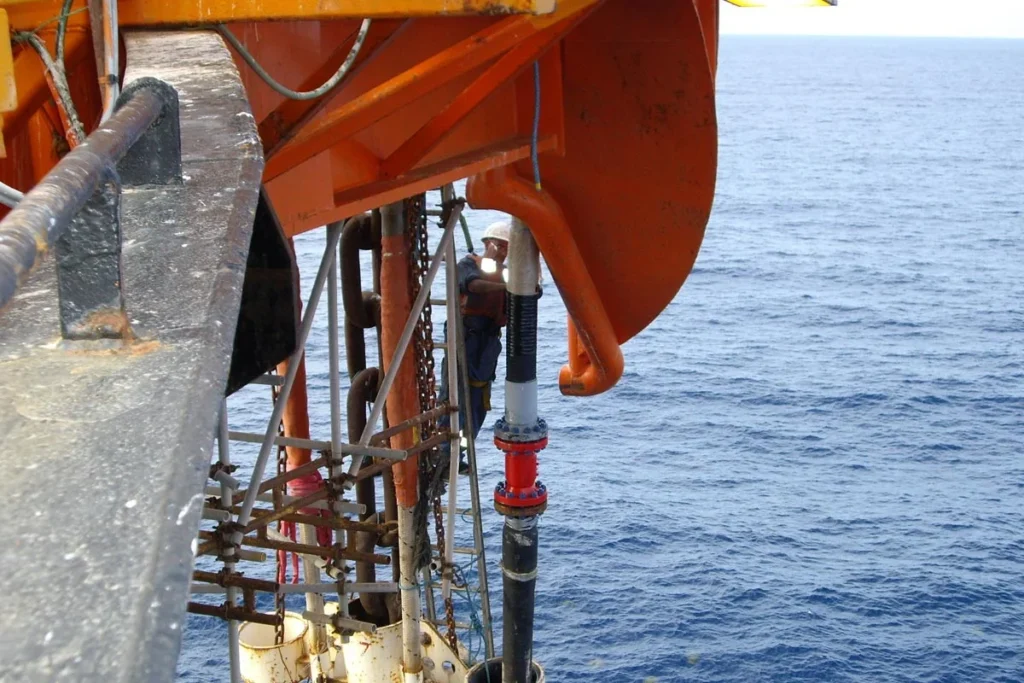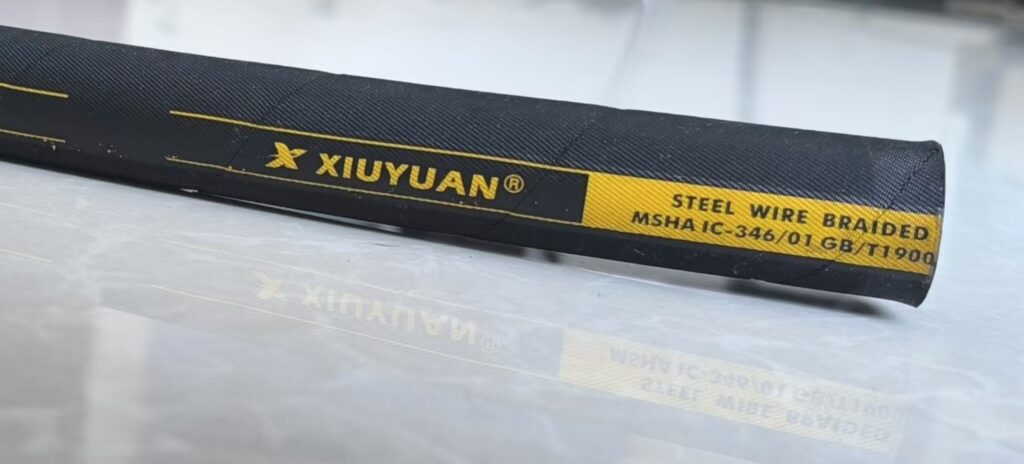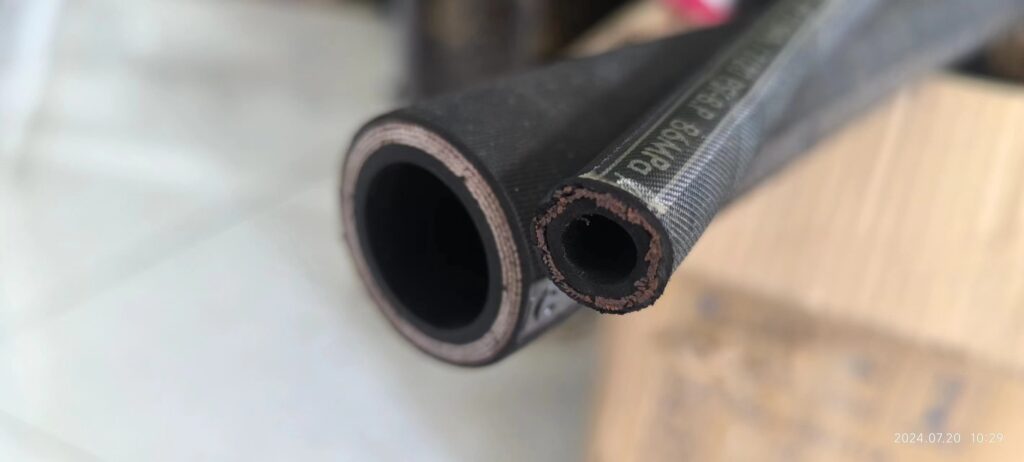Hydraulic hoses are essential components of hydraulic systems used in various industries, including construction, agriculture, and manufacturing. They are responsible for transmitting high-pressure fluids such as oil and hydraulic fluid between various components of the hydraulic system. As such, it is critical that they are of high quality and meets the necessary performance and safety standards. In this blog post, we will examine how to do quality control of hydraulic hoses from eight aspects.
Inspection of Raw Materials
The quality of the raw materials used in the production of hydraulic hoses is critical to their performance and durability. Therefore, the inspection of raw materials is the first step in quality control. Manufacturers should ensure that the rubber used in the production of hydraulic hoses is of high quality and free from defects such as air bubbles, cracks, and impurities. Additionally, they should ensure that the metal fittings used are of the correct size, shape, and material and are free from defects such as cracks, corrosion, and burrs.
Cutting and Crimping
The next step in quality control is the cutting and crimping of the hydraulic hose. The cutting process should be precise to ensure that the hose is of the correct length and has a smooth edge. The crimping process should also be precise to ensure that the hose is securely attached to the fittings without any leaks or defects. Manufacturers should ensure that the cutting and crimping equipment is regularly maintained and calibrated to ensure that the final product meets the necessary quality standards.
Pressure Testing
Pressure testing is an essential step in the quality control of hydraulic hoses. This test involves subjecting the hydraulic hose to high pressures to ensure that it can withstand the pressure without leaking or bursting. Manufacturers should use calibrated and certified pressure testing equipment to ensure accurate and reliable results. The hydraulic hose should be tested at the maximum pressure it is rated for, and the test should be performed for an adequate duration to ensure that the hose can withstand continuous use.
Visual Inspection
Visual inspection is a critical step in quality control as it allows manufacturers to identify any defects or imperfections that may not be detected by other tests. The visual inspection should be performed at each stage of production, including after the cutting and crimping process and after pressure testing. Manufacturers should ensure that the inspection is performed under proper lighting conditions and that trained personnel perform it. Any defects or imperfections identified during the visual inspection should be corrected before the hose is approved for use.
Durability Testing
Durability testing is another critical step in quality control. This test involves subjecting the hydraulic hose to various conditions to ensure that it can withstand the rigors of use without cracking, tearing, or puncturing. The durability test should be performed under simulated real-world conditions, including exposure to heat, cold, moisture, and mechanical stress. Manufacturers should use calibrated and certified testing equipment to ensure accurate and reliable results.
Temperature Testing
Temperature testing is a critical step in quality control as it allows manufacturers to ensure that the hydraulic hose can withstand extreme temperatures without deteriorating or losing its shape. The temperature test involves subjecting the hydraulic hose to various temperatures and observing its behavior. The test should be performed at both high and low temperatures, and the hydraulic hose should be observed for any signs of cracking deformation, or other defects.
Electrostatic Discharge Testing
Electrostatic discharge (ESD) testing is a critical step in quality control, especially for hydraulic hoses used in explosive environments. This test involves subjecting the hydraulic hose to high voltages to ensure that it can withstand electrostatic discharges without igniting flammable gases or liquids. Manufacturers should use calibrated and certified ESD testing equipment to ensure accurate and reliable results.
Quality Control Standards
Quality control standards are critical in ensuring that the production of hydraulic hoses follows a set of guidelines and procedures that ensure the final product meets the necessary quality and safety standards. There are several quality control standards that manufacturers can follow, such as ISO 9001 and SAE J517. These standards provide guidelines for various aspects of production, including the selection of raw materials, manufacturing processes, and testing procedures. Following these standards helps manufacturers to produce high-quality hydraulic hoses consistently.
In addition to these eight aspects, there are several advanced technologies that manufacturers can use to enhance the quality control of hydraulic hoses. These technologies include automated testing equipment, computer-aided design (CAD), and real-time monitoring systems. Automated testing equipment can perform various tests, including pressure testing, durability testing, and temperature testing, with greater accuracy and efficiency than manual testing. CAD software can help manufacturers design and produce hydraulic hoses with greater precision and efficiency. Real-time monitoring systems can detect defects and other issues in real time, allowing manufacturers to take corrective action immediately.
Moreover, it is essential to note that the quality control of hydraulic hoses is not only the responsibility of the manufacturer but also of the end-user. End-users should inspect and maintain hydraulic hoses regularly to ensure that they remain in good condition and do not pose any safety risks. Inspections should include visual checks for any signs of wear, damage, or leaks. Additionally, end-users should ensure that hydraulic hoses are not subjected to conditions beyond their rated pressure or temperature limits.
Regular maintenance and inspection of hydraulic hoses can help prevent accidents and equipment failure, saving businesses time and money. It is also crucial to follow the manufacturer’s instructions regarding the storage, handling, and installation of hydraulic hoses to ensure that they remain in good condition.
In conclusion, the quality control of hydraulic hoses is an essential aspect of the production process that should not be overlooked. Manufacturers should implement rigorous quality control measures that cover all stages of production, including the selection of raw materials, manufacturing processes, and testing procedures. End-users should also inspect and maintain hydraulic hoses regularly to ensure that they remain in good condition and do not pose any safety risks. By working together, manufacturers and end-users can ensure that hydraulic hoses meet the necessary quality and safety standards, contributing to the safe and efficient operation of hydraulic systems in various industries.





